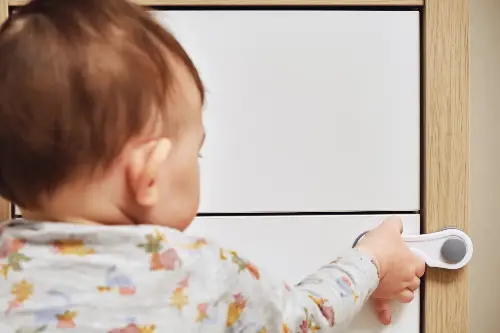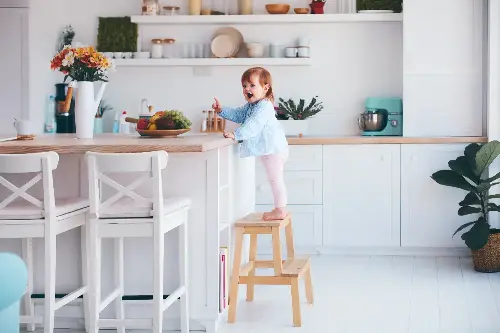Welcoming a newborn into the world is a transformative experience that can fill a home with joy, wonder, and a fair bit of trepidation. The safety of your little one becomes a paramount concern, and child-proofing your living space is a crucial step in transforming your home into a secure haven. Here is a comprehensive checklist that will guide you in creating a child-friendly environment, safeguarding your infant from common household hazards.

Securing Heavy Furniture and Appliances
Furniture tip-overs are a common cause of injury for small children, who may attempt to climb drawers or shelves. Secure all heavy furniture to the wall using furniture straps or brackets. This includes bookcases, wardrobes, and television stands. Don't forget to anchor down appliances too—fridges and ovens can also pose a tip-over risk.
Out of Reach, Out of Danger
Everyday items such as medicines, cleaning products, and small batteries must be kept out of reach. Store them in high cabinets with child-proof locks. Be vigilant about small objects that can pose choking hazards, such as coins, buttons, and jewellery, ensuring they are never left within grasp.
The Electrical Safety Sweep
Electrical outlets are like magnets for curious fingers. Install outlet covers or plates to prevent your child from inserting objects or fingers into sockets. Look into cordless window coverings to eliminate the danger of strangulation from cords, or use safety wind-ups to keep them out of reach.
Fire Safety First
Ensure smoke detectors and carbon monoxide alarms are in working order, with batteries replaced regularly. Have a functioning fire extinguisher accessible, and create a family fire evacuation plan that takes into account your baby's presence.

The Great Barrier: Gates and Guards
Stair gates at the top and bottom of your stairs are a must-have, but also consider room dividers for areas with potential dangers. Install door guards to prevent little fingers from getting caught and use window guards to prevent falls from windows, ensuring that at least one window in each room can be used as an escape route in case of an emergency.
Kitchen Caution
The kitchen is a treasure trove of hazards. Fit appliances with child-proof locks where possible, use stove guards, and turn pot handles inwards when cooking. Keep chairs and step stools away from worktops to discourage climbers, and when not in use, ensure sharp objects and hot drinks are well out of reach.
Bathroom Basics
Always supervise bath time and never leave your newborn unattended near water—not even for a moment. Adjust your water heater to prevent scalding, typically setting it to no more than 48 degrees Celsius. Consider toilet locks to keep lids down, and remember to store razors, scissors, and other hazards in a locked cupboard.
Sleep Soundly: Nursery Safety
Choose a crib that meets safety standards with a firm mattress and well-fitting sheets. Keep it clear of toys, pillows, and loose bedding to reduce the risk of Sudden Infant Death Syndrome (SIDS). Position it away from windows, heaters, lamps, wall decorations, and cords. Also, ensure that baby monitors and other electrical devices are at least one metre away from the crib to avoid strangulation risks from cords.

Deterring Dangers of Ornamentation
Be mindful of how you decorate your home—picture frames, bookends, and ornaments can become harmful if pulled down by a curious child. Secure or remove items that might be grabbed from low shelves or tables.
Chemical and Poison Awareness
All chemicals, detergents, and any other poisonous substances should be stored in locked cabinets. Remember that this includes everyday items such as alcohol, cosmetics, and plants that can be toxic if ingested.
Pet Precautions
If you have pets, ensure their food, water bowls, and litter boxes are inaccessible to your baby. Also, create safe zones where pets can retreat to when they need space away from the baby’s curious grasp.
Emergency Information
Keep emergency numbers, including those for poison control, near the phone or stored prominently on mobile devices. A list of basic first aid steps for common accidents can also be invaluable in an emergency.
By implementing these preventative measures, you can significantly reduce the risks posed by everyday household items and create a safe sanctuary for your precious new arrival. Child-proofing might seem like an extensive and daunting task, but taking the time to make these changes is an investment in your baby’s safety and your peace of mind. So, take a deep breath, set aside some time, and begin the rewarding process of transforming your home into a fortress of security for your little one. With each step, you'll be crafting a nurturing environment where your newborn can explore, grow, and thrive under the loving watch of their family's care.
